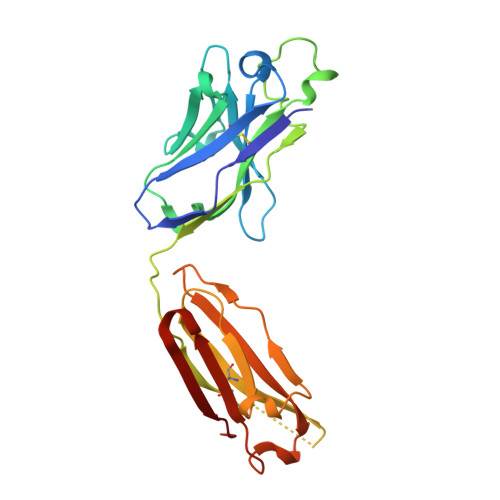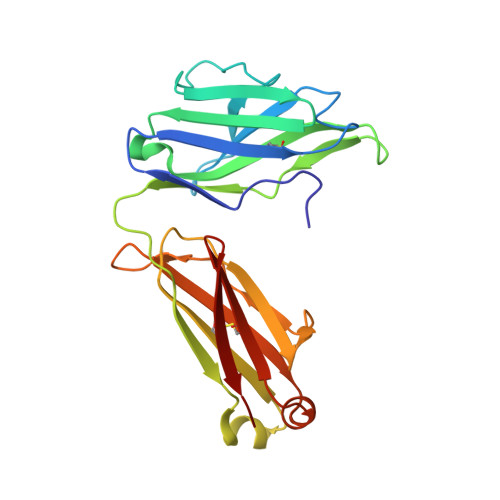Cryo-EM structures elucidate neutralizing mechanisms of anti-chikungunya human monoclonal antibodies with therapeutic activity.
Long, F., Fong, R.H., Austin, S.K., Chen, Z., Klose, T., Fokine, A., Liu, Y., Porta, J., Sapparapu, G., Akahata, W., Doranz, B.J., Crowe, J.E., Diamond, M.S., Rossmann, M.G.(2015) Proc Natl Acad Sci U S A 112: 13898-13903
- PubMed: 26504196
- DOI: https://doi.org/10.1073/pnas.1515558112
- Primary Citation of Related Structures:
5CGY, 5CHN - PubMed Abstract:
Chikungunya virus (CHIKV) is a mosquito-transmitted alphavirus that causes severe acute and chronic disease in humans. Although highly inhibitory murine and human monoclonal antibodies (mAbs) have been generated, the structural basis of their neutralizing activity remains poorly characterized. Here, we determined the cryo-EM structures of chikungunya virus-like particles complexed with antibody fragments (Fab) of two highly protective human mAbs, 4J21 and 5M16, that block virus fusion with host membranes. Both mAbs bind primarily to sites within the A and B domains, as well as to the B domain's β-ribbon connector of the viral glycoprotein E2. The footprints of these antibodies on the viral surface were consistent with results from loss-of-binding studies using an alanine scanning mutagenesis-based epitope mapping approach. The Fab fragments stabilized the position of the B domain relative to the virus, particularly for the complex with 5M16. This finding is consistent with a mechanism of neutralization in which anti-CHIKV mAbs that bridge the A and B domains impede movement of the B domain away from the underlying fusion loop on the E1 glycoprotein and therefore block the requisite pH-dependent fusion of viral and host membranes.
Organizational Affiliation:
Department of Biological Sciences, Purdue University, West Lafayette, IN 47907;















